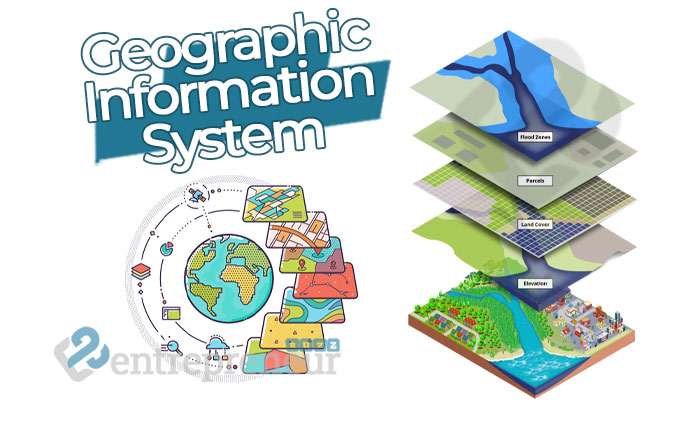Hillshade LapakGIS is an essential technique in Geographic Information Systems (GIS) that allows users to visually represent terrain relief through simulated illumination. By highlighting variations in elevation and terrain features, hillshade maps provide valuable insights for a wide range of applications, including landscape analysis, visualization, and cartography. In this comprehensive guide, we will explore the concept of Hillshade LapakGIS, its significance in GIS, and demonstrate how to create stunning hillshade maps using LapakGIS software.
Understanding Hillshade LapakGIS
What is Hillshade LapakGIS?
Hillshade LapakGIS is a technique used to create shaded relief representations of terrain surfaces in GIS. It mimics the effect of the sun’s position in the sky, casting shadows on the landscape based on the elevation data of the terrain. The resulting hillshade map provides 3D visualization of the terrain, making it easier to interpret and analyze its characteristics.
The Importance of Hillshade LapakGIS
Hillshade LapakGIS plays a crucial role in several domains, including:
- Terrain Visualization: Hillshade maps enhance the visual representation of terrain by adding depth and realism. They provide a better understanding of the landscape’s topographic features, such as mountains, valleys, and ridges.
- Landscape Analysis: Hillshade maps aid in landscape analysis by highlighting variations in slope, aspect, and landforms. These maps are particularly useful for studying drainage patterns, land cover classification, and landform identification.
- Cartography: Hillshade maps are widely used in cartography to create visually appealing maps. By incorporating hillshade layers into maps, cartographers can improve the overall aesthetics and readability of the map, making it more engaging for the audience.
- Terrain Representation: Hillshade maps contribute to accurate terrain representation by providing a comprehensive view of elevation changes. They offer valuable insights into the surface characteristics of a region, helping researchers and planners make informed decisions related to infrastructure development, land use planning, and environmental assessments.
Creating Hillshade LapakGIS Maps with Lapak GIS
To create stunning Hillshade LapakGIS maps, we will utilize LapakGIS software, a powerful GIS tool known for its user-friendly interface and advanced cartographic capabilities. Follow the steps below to generate compelling hillshade maps using LapakGIS:

Step 1: Data Acquisition
The first step in creating a hillshade map is acquiring the necessary elevation data. LapakGIS supports various data formats, such as Digital Elevation Models (DEMs) or terrain datasets. You can obtain elevation data from reputable sources like the United States Geological Survey (USGS) or local government agencies.
Step 2: Preparing the Data
Once you have acquired the elevation data, import it into LapakGIS. Ensure that the data is georeferenced and properly projected to maintain spatial accuracy. LapakGIS provides tools for data preparation, such as resampling and filtering.
Step 3: Generating the Hillshade
With the elevation data prepared, it’s time to generate the hillshade map in LapakGIS. Follow these steps:
- Select the elevation dataset in LapakGIS and navigate to the hillshade tool or function.
- Adjust the hillshade parameters to customize the appearance of the map. These parameters typically include the sun’s azimuth (the angle of the light source), the sun’s altitude (the height of the light source above the horizon), and the hillshade relief factor (to control the contrast and shading intensity).
- Preview the hillshade effect in real-time to fine-tune the settings and achieve the desired visual output.
- Once satisfied with the hillshade parameters, generate the hillshade map.
LapakGIS will calculate the shading and illumination effects based on the elevation data and the specified parameters, resulting in a visually appealing representation of the terrain relief.
Step 4: Enhancing the Hillshade Map
To enhance the hillshade map and make it more informative, consider incorporating additional cartographic elements and data layers. Here are some suggestions:
- Overlay Additional Layers: Add thematic layers such as land cover, hydrology, or roads to provide context and additional information to the hillshade map.
- Adjust Transparency: Fine-tune the transparency of the hillshade layer to ensure that the underlying layers are still visible. This will prevent the hillshade from overpowering other important features on the map.
- Colorization: Apply a color ramp or gradient to the hillshade map to further enhance the visualization. This can help differentiate various elevation ranges or highlight specific terrain features.
- Labeling: Add labels to important geographic features such as mountain peaks, rivers, or cities. This will improve the map’s readability and help viewers identify key elements.
- Legend and Scale: Include a legend that explains the symbology and scale of the hillshade map. This will provide viewers with a clear understanding of the map’s representation and measurements.
Step 5: Analyzing and Interpreting the Hillshade LapakGIS Map
Once you have generated the Hillshade LapakGIS map, it’s time to analyze and interpret the terrain characteristics it reveals. Here are some key aspects to consider:
- Slope Analysis: Examine the variations in slope represented by the hillshade map. Steep slopes are indicated by pronounced shading, while flatter areas appear brighter. This information can be valuable for assessing the suitability of land for various purposes, such as agriculture, urban development, or recreational activities.
- Aspect Analysis: Analyze the aspect or the direction a slope faces. Hillshade maps use shading to represent aspects, with north-facing slopes appearing darker and south-facing slopes appearing brighter. This information is useful for understanding sunlight exposure, vegetation patterns, and microclimate variations.
- Landform Identification: Identify different landforms such as valleys, ridges, and peaks based on their distinct shading patterns. These landforms play a crucial role in hydrological analysis, ecosystem mapping, and landscape classification.
- Visual Impact Assessment: Evaluate the visual impact of proposed developments or infrastructure projects on the landscape. Hillshade maps can help assess how new structures or modifications may affect the aesthetics and harmony of the surrounding environment.
FAQs
Q: Can I create Hillshade LapakGIS maps using free GIS software?
A: Yes, there are several free Hillshade LapakGIS software options available that offer Hillshade LapakGIS capabilities. QGIS and GRASS GIS are popular open-source GIS software that provide the necessary tools to create hillshade maps without any cost.
Q: Can I adjust the Hillshade LapakGIS parameters after generating the map?
A: Yes, most GIS software allows you to adjust the hillshade parameters even after generating the Hillshade LapakGIS map. This flexibility enables you to fine-tune the hillshade representation according to your preferences and analysis requirements.
Q: How can Hillshade LapakGIS maps be used in urban planning?
A: Hillshade LapakGIS maps are valuable in urban planning as they help assess the suitability of land for development, analyze slope stability, identify potential flood-prone areas, and evaluate the visual impact of proposed structures. By integrating hillshade maps with other spatial data, urban planners can make informed decisions regarding infrastructure projects and land use planning.

